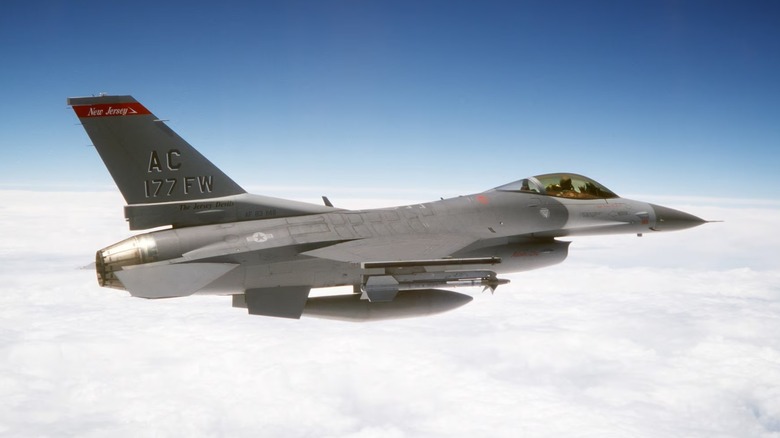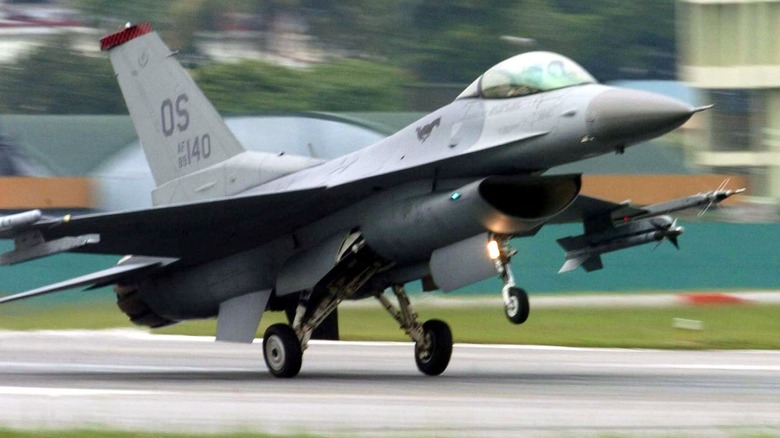Which Country's Military Flies The Most F-16 Fighter Jets?
The F-16 is something of a legend in the world of military aviation. Over 50 years since its first flight, it still dominates the skies today and continues to be the go-to fourth-generation fighter for most countries. Its journey began with an unplanned, dramatic first flight on January 20, 1974, and since then, over 4,600 F-16s have been manufactured. While the official name is "Fighting Falcon," crews and pilots like to call it the "Viper" because they think it resembles the spaceship from the old "Battlestar Galactica" TV show. As for who has the biggest collection of these iconic jets in 2025, the answer won't surprise you. A report by Flight Global notes that the United States operates the largest fleet by a country mile, with a staggering 875 active F-16s across its Air Force and Navy.
The runner-up is Turkey, which fields a respectable 238 Vipers. Following closely is Israel with 223 jets, and Egypt with 218. The rest of the top ten are all flying significant numbers. South Korea operates 167 F-16s, Greece has 152, and Taiwan flies 138 of the fighters. Rounding out the list are the United Arab Emirates with 76, Pakistan with 75, and Singapore with 60 aircraft. But these numbers are just the start. Over 3,100 F-16s are active worldwide in total as of 2024, meaning that the Viper's presence is truly global.
Why the F-16 is still so popular despite being in service for over 50 years
The F-16 was born from the hard lessons of the Vietnam War, where large, missile-focused American jets were often outmaneuvered by smaller, more agile Soviet-made MiGs in close-quarters dogfights. This experience fueled a new design philosophy from the "Fighter Mafia." This was a controversial group of American Air Force officers and engineers who advocated for fighter jets that favored maneuverability.
The result was the F-16, the first production fighter designed to be aerodynamically unstable. While this may sound bad at first, the characteristic makes it incredibly nimble, allowing it to pull off stunts like 9G turns. Controlling this is a challenge, though, which is why the jet was equipped with a groundbreaking fly-by-wire system – a computer to manage the control surfaces. The design also features a massive bubble canopy for amazing visibility and a side-mounted control stick instead of the traditional center one.
But what started as something designed specifically for dogfights, was quickly turned into a "Swiss Army knife" adapted to roles from ground attack to missile defense. Add in its relatively low operating cost and the fact that so many allied nations fly it, and you get huge logistical advantages and enhanced interoperability during joint missions.
That said, while the F-16 may be a brilliant jet, it eventually has to be replaced to maintain superiority. The stealthy, but also significantly pricier F-35 Lightning II comes out on top as a successor. Many air forces are already making the switch. For instance, The Aviationist reported that the USAF will start swapping out its F-16s for F-35s at Japan's Misawa Air Base in 2026. Still, a wider switch won't be happening anytime soon. The USAF plans to keep its fleet flying well into the 2040s.

